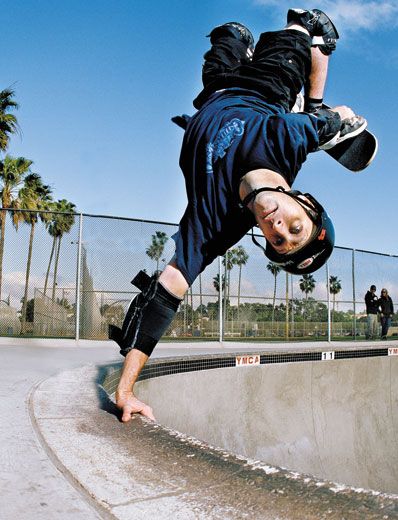Q and A with Tony Hawk
The skateboarding champion talks about the growth and evolution of his sport
Tony Hawk was skateboarding’s world champion for 12 years. His donation of a 1986 pro model Powell-Peralta deck with truck and wheels to the National Museum of American History launches its collection of skateboarding artifacts. Smithsonian’s Ryan Reed interviewed Hawk by e-mail.
Skateboarding has become more mainstream since you started competing in the 1980s. Do you miss the days when skateboarders were rebels?
I think there are still plenty of “rebels” in skateboarding, but it is much more available and accessible to the general public now. I never wanted skating to be so underground that kids were afraid to try it.
Do you prefer the old-school boards or the newer, narrower models?
I prefer the newer models because they are easier to flip and spin under your feet. The boards we rode in the 1980s weren’t intended to come off your feet.
You raise money through the Tony Hawk Foundation for skateparks in low-income areas and you hold Stand Up for Skateparks festivals. What’s your goal?
We have games, auctions, music and skating demonstrations so the crowds can see firsthand the work we do, who is in charge and the kids they benefit with donations.
What are some of the benefits for young kids learning to skateboard?
They learn a sense of self-confidence and self-motivation, and it stays with them into their adult lives. It also lets them realize they don’t have to participate in a team sport to be active and have camaraderie.
Which Smithsonian museum would you most like to skate in?
Natural History. An Ollie [a trick that involves popping a skateboard into the air] over a dinosaur? I’m in!
